Turmeric
Turmeric is a powerful functional food known for its vibrant golden colour and impressive health benefits. This spice, derived from the root of the Curcuma longa plant, has been used for centuries in traditional medicine for its anti-inflammatory, antioxidant, and digestive health properties. Turmeric is rich in curcumin, a potent compound that is responsible for many of its health-promoting effects.
Read More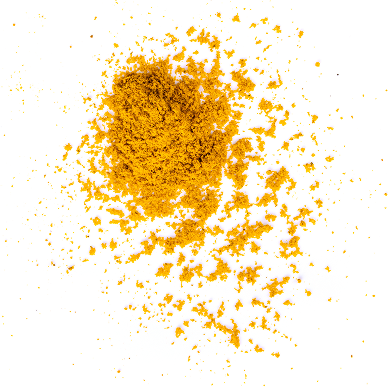
The functional benefits of turmeric are primarily attributed to its anti-inflammatory properties, which help reduce inflammation in the body and may support joint health. Curcumin, the active compound in turmeric, is also known for its antioxidant effects, helping to neutralise harmful free radicals and protect the body from oxidative stress. Turmeric may also support cognitive health, digestive health, and cardiovascular health due to its ability to improve blood circulation and reduce the risk of chronic diseases.
Incorporating turmeric into your diet is simple and versatile. Use it to add flavour to curries, soups, stews, and roasted vegetables, or enjoy it in beverages such as golden milk or smoothies. Turmeric can also be sprinkled on grains, legumes, and salads for an added nutrient boost.
Recommended Intake
- 1-2 teaspoons (3–6g) of ground turmeric or a similar amount of fresh turmeric root per day, depending on individual dietary needs.
Tips
- Pair turmeric with black pepper to enhance the bioavailability of curcumin, as piperine in black pepper increases its absorption.
- Use turmeric with healthy fats like olive oil or coconut oil to further improve curcumin absorption.
- Incorporate turmeric into smoothies, teas, or lattes for a warming, anti-inflammatory boost.
- Store turmeric in a cool, dark place to maintain its potency and flavour.
- If using fresh turmeric root, grate or chop it finely and add it to dishes for a fresh, earthy flavour.
Avoid
- Excessive consumption – While turmeric is beneficial, high doses can cause digestive discomfort in some individuals. Stick to the recommended intake.
- Using turmeric alone without pairing it with other absorption-enhancing ingredients like black pepper or fat, as it may not be as effective.
Benefits
- Contains curcumin, a powerful anti-inflammatory compound that supports joint and overall body health.
- Rich in antioxidants, helping to protect the body from oxidative stress and cellular damage.
- May support cognitive health and brain function by reducing inflammation and promoting circulation.
- Known for its digestive health benefits, including reducing symptoms of indigestion and bloating.
- May help improve cardiovascular health by reducing inflammation and promoting healthy blood circulation.
Ginger
Ginger is a functional food renowned for its warm, spicy flavour and powerful health benefits. It has been used for centuries in traditional medicine to treat a wide range of conditions. The active compounds in ginger, such as gingerol, contribute to its antioxidant, anti-inflammatory, and digestive health-promoting properties.
The functional benefits of ginger are primarily due to its anti-inflammatory effects, which help reduce pain and inflammation in the body. It has been shown to alleviate nausea, aid digestion, and soothe an upset stomach, making it a popular remedy for digestive issues.
Read More
Ginger is also rich in antioxidants that help protect the body from oxidative stress and may support heart health by improving blood circulation and lowering cholesterol levels.
Incorporating ginger into your diet is easy and versatile. Add it fresh to smoothies, teas, stir-fries, or soups for a burst of flavour and health benefits. Ginger can also be used in baking or as a spice to enhance both sweet and savoury dishes.
Recommended Intake
- 1-2 teaspoons of fresh ginger (about 5–10g) per day, or 1/4–1/2 teaspoon of ground ginger, depending on individual dietary needs.
Tips
- To release the full flavour and benefits of ginger, crush or grate it before using it in recipes.
- Pair ginger with honey and lemon in hot water for a soothing tea that helps with digestion and nausea.
- Store fresh ginger in the fridge, wrapped in a paper towel and placed in an airtight container, to maintain freshness.
- Add ginger to smoothies or fresh juices for a spicy, nutrient-rich kick.
Avoid
- Consuming excessive amounts – While ginger is beneficial, too much can cause heartburn or digestive discomfort in some individuals.
- Using ginger in combination with blood-thinning medications without consulting a healthcare provider, as it may interact with them.
Benefits
- Contains gingerol, a powerful anti-inflammatory compound that helps alleviate pain and inflammation.
- Rich in antioxidants that protect the body from oxidative damage and promote overall health.
- Known to aid digestion by reducing bloating, gas, and nausea.
- Supports heart health by improving circulation and lowering cholesterol levels.
- May help reduce the risk of chronic diseases, such as cardiovascular disease and arthritis.
Did you know? Ginger can help with nausea. If you're feeling nauseous, especially during travel or pregnancy, ginger is known for its ability to soothe the stomach and reduce symptoms of nausea.
Note! Radiated vs. irradiated spices
Irradiated spices are exposed to radiation to kill bacteria, which can reduce flavour and nutrients. For the best taste and health benefits, choose fresh, whole spices. When opting for ground spices, look for non-irradiated options to retain their potency and nutritional value.
Cinnamon
Cinnamon is a widely used functional food known for its sweet, warm flavour and numerous health benefits. It has been treasured for centuries, both as a spice and a traditional medicine. The active compounds in cinnamon, such as cinnamaldehyde, contribute to its powerful antioxidant, anti-inflammatory, and blood sugar-regulating properties.
The functional benefits of cinnamon are primarily attributed to its ability to help regulate blood sugar levels making it a great option for those with insulin resistance or type 2 diabetes.
Read More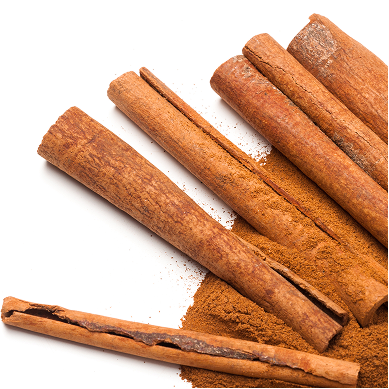
Cinnamon has also been shown to reduce inflammation in the body, supporting joint and muscle health. Furthermore, it is rich in antioxidants that help protect the body from oxidative stress and may support heart health by improving cholesterol levels and blood circulation.
Incorporating cinnamon into your diet is simple and delicious. Sprinkle it on oatmeal, yogurt, or smoothies for a warm, comforting touch. You can also use cinnamon in baking, coffee, or tea, or add it to savoury dishes for a unique flavour profile.
Recommended Intake
- 1/2 to 1 teaspoon of ground cinnamon per day, depending on individual dietary needs.
Tips
- Choose Ceylon cinnamon (often referred to as "true cinnamon") for a milder, higher-quality option that contains lower levels of coumarin, a potentially harmful compound in large amounts.
- Pair cinnamon with other antioxidant-rich foods like berries or apples for a heart-healthy snack.
- Add cinnamon to smoothies, oatmeal, or baked goods to enhance both flavour and nutrition.
- Store cinnamon in a cool, dry place away from direct sunlight to retain its flavour and aroma.
Avoid
- Consuming large amounts of cinnamon – Excessive intake of cassia cinnamon, which contains higher levels of coumarin, can be harmful over time. Stick to moderate amounts.
- Overheating cinnamon – While it’s great in warm dishes, high temperatures for extended periods can reduce its beneficial properties.
Benefits
- Regulates blood sugar levels by improving insulin sensitivity, making it beneficial for individuals with type 2 diabetes or insulin resistance.
- Rich in antioxidants that protect the body from oxidative stress and may reduce the risk of chronic diseases.
- Has anti-inflammatory properties that support joint, muscle, and overall body health.
- May improve heart health by lowering cholesterol levels and promoting healthy circulation.
- Known for its ability to enhance brain function, possibly improving memory and cognitive performance.
Green herbs: Oregano, Basil, Rosemary, Peppermint, Coriander, Parsley, Dill, and Sage
Green herbs are powerful functional foods, packed with vitamins, antioxidants, and unique compounds that contribute to a variety of health benefits. These herbs have been used for centuries - not only to enhance the flavour of dishes, but also for their medicinal properties. Each herb brings its own specific nutrients and benefits to the table, making them valuable additions to any diet.
Read More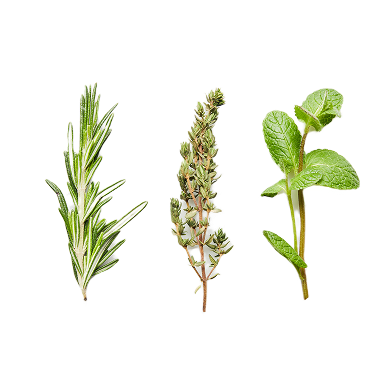
Oregano
Oregano is a versatile herb known for its strong flavour and numerous health benefits. Rich in antioxidants, it supports immune health and helps fight off infections. Oregano also contains compounds like carvacrol, which have anti-inflammatory and antimicrobial properties, supporting digestive health and fighting off harmful bacteria.
Basil
Basil is packed with vitamin K, which plays a crucial role in bone health, and is rich in antioxidants that combat oxidative stress. Basil also contains essential oils that are known to have anti-inflammatory and antibacterial effects, making it a great addition for supporting immune function and promoting overall wellness.
Rosemary
Rosemary is known for its robust aroma and is rich in antioxidants like rosmarinic acid, which help reduce inflammation and improve circulation. Rosemary has been shown to enhance memory and brain function and is often used to support cognitive health. It also aids in digestion and can alleviate bloating and indigestion.
Peppermint
Peppermint is often used for its refreshing flavour and ability to soothe digestive issues. It helps relax the muscles of the digestive tract, making it effective for relieving bloating, gas, and indigestion. Peppermint is also known for its cooling effect and can provide relief from headaches or tension when used as an essential oil.
Coriander
Coriander, also known as cilantro, is rich in vitamins A, C, and K, which support skin health, immune function, and bone health. It also contains antioxidants that help fight inflammation and may support detoxification by aiding in the removal of heavy metals from the body.
Parsley
Parsley is often used to garnish dishes, but it’s also packed with nutrients. Rich in vitamins A, C, and K, parsley supports eye health, boosts immunity, and promotes bone strength. Parsley is also a great source of folate and iron, which are vital for energy production and red blood cell formation.
Dill
Dill is not only aromatic but also offers digestive benefits. It has carminative properties, helping to soothe indigestion, bloating, and gas. Dill is also rich in antioxidants like flavonoids, which support heart health and reduce inflammation. It contains vitamins A and C, supporting skin health and immune function.
Sage
Sage has a long history of use in traditional medicine, particularly for its cognitive benefits. It is rich in antioxidants that support brain health and may improve memory and concentration. Sage also has anti-inflammatory and antibacterial properties, which support digestive health and alleviate symptoms of conditions like sore throats or digestive upset.
Recommended Intake
- Fresh herbs: 1 to 2 tablespoons of chopped fresh herbs per day.
- Dried herbs: 1/2 to 1 teaspoon of dried herbs per day.
Tips
- Choose fresh, organic herbs for maximum nutritional benefits and flavour.
- Store fresh herbs in the fridge in a damp paper towel or in a jar with water for longer shelf life.
- Use dried herbs sparingly, as they are more concentrated than fresh herbs.
- Add herbs to salads, smoothies, soups, or baked goods to enhance both flavour and nutrition.
- Use herb-infused oils or teas for a convenient way to incorporate these herbs into your routine.
Avoid
- Overuse of dried herbs – Dried herbs are concentrated, so use in moderation to avoid overpowering the dish.
- Cooking herbs at high temperatures for extended periods – This can reduce their antioxidant and flavour content.
Benefits
- Oregano: Supports immune function and digestive health, with anti-inflammatory and antimicrobial properties.
- Basil: Rich in antioxidants, supports bone health, and has anti-inflammatory and antibacterial effects.
- Rosemary: Enhances memory, supports circulation, and reduces inflammation.
- Peppermint: Aids digestion, reduces bloating, and provides headache relief.
- Coriander: Supports detoxification, fights inflammation, and promotes skin health.
- Parsley: Boosts immunity, supports bone health, and provides energy through vitamins and minerals.
- Dill: Eases digestive issues, reduces inflammation, and promotes heart health.
- Sage: Supports cognitive health, improves memory, and reduces inflammation.
Did you know? Fresh spices are best for adding a burst of flavour and nutrients to dishes right before serving, while ground spices are perfect for longer-cooked recipes where their intense flavours can meld into the dish. For the best of both worlds, use fresh when possible, for maximum health benefits, and ground for convenience and flavour depth in slow-cooked meals.
Hack for Reducing Pesticides on Fresh Herbs
To remove pesticides from fresh herbs, soak them in a mixture of water and white vinegar (1 part vinegar to 3 parts water) for 5-10 minutes. After soaking, rinse thoroughly with clean water. This helps remove surface pesticides and bacteria. If possible, opt for organic herbs to reduce exposure to harmful chemicals.
The vitamin and mineral content of the listed herbs and spices per 100g, focusing on commonly found nutrients:
| Herb/Spice | Vitamin A (IU) | Vitamin C (mg) | Vitamin K (mcg) | Calcium (mg) | Iron (mg) | Magnesium (mg) | Potassium (mg) |
|---|---|---|---|---|---|---|---|
| Garlic | 2 IU | 31.2 mg | 1.7 mcg | 181 mg | 1.7 mg | 25 mg | 401 mg |
| Ginger | 0 IU | 5 mg | 0 mcg | 16 mg | 0.6 mg | 43 mg | 415 mg |
| Coriander | 112 IU | 27 mg | 0 mcg | 67 mg | 1.8 mg | 26 mg | 521 mg |
| Rosemary | 295 IU | 21 mg | 20.2 mcg | 318 mg | 6.6 mg | 107 mg | 668 mg |
| Oregano | 160 IU | 5 mg | 0 mcg | 159 mg | 4.3 mg | 34 mg | 414 mg |
| Sage | 8 IU | 0.6 mg | 171.8 mcg | 164 mg | 4.5 mg | 214 mg | 428 mg |
| Parsley | 8425 IU | 133 mg | 164 mcg | 138 mg | 6.2 mg | 50 mg | 554 mg |
| Dill | 264 IU | 85 mg | 0 mcg | 150 mg | 4.5 mg | 68 mg | 858 mg |
| Cinnamon | 30 IU | 3.8 mg | 3 mcg | 264 mg | 8.3 mg | 60 mg | 431 mg |
| Basil | 264 IU | 18 mg | 414 mcg | 177 mg | 3.6 mg | 64 mg | 295 mg |
| Ashwagandha | 0 IU | 0 mg | 0 mcg | 0 mg | 1.5 mg | 0 mg | 0 mg |
| Echinacea | 0 IU | 2.4 mg | 0 mcg | 2 mg | 0.5 mg | 7 mg | 20 mg |
Green Tea and Black Tea
Green tea and black tea are two of the most popular beverages worldwide, each offering unique health benefits due to their distinct processing methods and rich nutrient profiles. Both teas come from the Camellia sinensis plant and contain powerful antioxidants, but they differ in their chemical composition and health-promoting effects. Incorporating green and black tea into your daily routine can offer numerous functional benefits that contribute to overall health and wellness.
Read More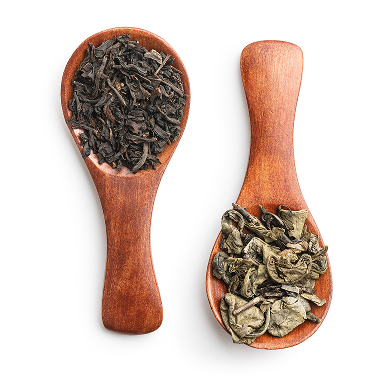
Green tea is known for its high content of polyphenols, particularly catechins like epigallocatechin gallate (EGCG), which have potent antioxidant and anti-inflammatory properties. These compounds help fight free radicals in the body, reducing oxidative stress and lowering the risk of chronic diseases such as heart disease and cancer. Green tea has been shown to support metabolism, promote fat oxidation, and enhance physical performance. It also aids in improving cognitive function and mental clarity. Additionally, green tea has mild diuretic properties and may help regulate blood sugar levels.
Black Tea
Black tea undergoes a fermentation process, which leads to higher levels of theaflavins and thearubigins—antioxidants that support cardiovascular health and promote healthy cholesterol levels. Black tea also contains caffeine, which can boost energy and improve focus and concentration. Like green tea, black tea is rich in antioxidants that help combat oxidative stress, supporting immune health and reducing inflammation. Additionally, black tea may have benefits for gut health, with certain compounds acting as prebiotics to nourish beneficial gut bacteria.
Recommended Intake
- Green Tea: 1 to 3 cups per day (approximately 240ml per cup).
- Black Tea: 1 to 3 cups per day (approximately 240ml per cup).
Both teas can be enjoyed as hot or iced beverages and may be consumed with or without added sweeteners. To maximize health benefits, avoid excessive sugar and opt for natural sweeteners, such as honey, if desired.
Tips
- For green tea, use water that is around 70°C to 80°C to avoid bitterness and preserve its delicate antioxidants.
- For black tea, steep in water that is around 100°C to extract full flavour and antioxidants.
- To reduce the caffeine content, steep both teas for a shorter period of time.
- Add a slice of lemon or a pinch of ginger to enhance the flavour and add extra health benefits.
- Choose high-quality loose-leaf tea or organic tea bags for a better taste and nutrient profile.
Avoid
- Overconsumption – Drinking more than 3 to 4 cups of tea per day may lead to excessive caffeine intake, potentially causing anxiety or sleep disturbances.
- Adding too much sugar – This can negate some of the health benefits of tea and contribute to excess calorie intake.
- Drinking too close to mealtime – Tea can inhibit the absorption of certain nutrients, such as iron, if consumed with meals.
Benefits
- Green Tea:
- Rich in antioxidants like EGCG, which fight free radicals and reduce oxidative stress.
- Boosts metabolism and supports fat burning.
- Improves brain function and enhances cognitive clarity.
- Supports healthy blood sugar levels and reduces the risk of type 2 diabetes.
- May help reduce the risk of heart disease by improving cholesterol levels and circulation.
- Black Tea:
- Contains antioxidants like theaflavins and thearubigins, which support heart health and reduce inflammation.
- Boosts energy levels and enhances mental focus due to caffeine content.
- Supports gut health by promoting beneficial gut bacteria.
- May improve cholesterol levels, helping to prevent cardiovascular diseases.
- Reduces the risk of certain cancers due to its potent antioxidant properties.
Did you know? Drinking 2-3 cups of green tea per day can increase calorie burning by 3-4% due to its catechins and caffeine content. This translates to roughly an additional 70-100 calories burned per day, depending on individual metabolism. Incorporating green tea into your daily routine can support weight management while benefiting overall health.
Herbal Tea (Peppermint, Chamomile, etc.)
Herbal teas are a delightful and soothing way to support overall health. Two popular herbal teas, peppermint and chamomile, are renowned for their calming properties and medicinal benefits. Both herbs have been used for centuries in traditional medicine to alleviate various ailments and promote relaxation. Whether you’re looking to improve digestion, enhance sleep quality, or simply enjoy a warm, comforting drink, peppermint and chamomile herbal teas offer functional health benefits that support wellness.
Read More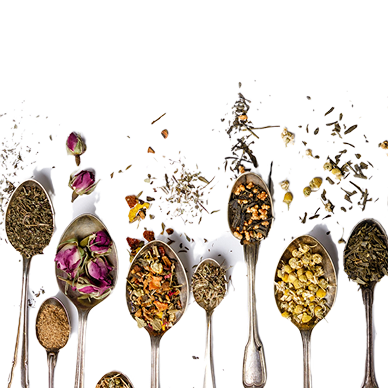
Peppermint Tea
Peppermint tea is made from the leaves of the peppermint plant, a hybrid of spearmint and water mint. Rich in menthol, peppermint tea is well known for its digestive benefits. It helps soothe an upset stomach, alleviate nausea, and promote healthy digestion by relaxing the muscles of the gastrointestinal tract. The menthol in peppermint also has a cooling effect, which can provide relief from headaches and migraines. Additionally, peppermint tea is often used as a natural remedy to relieve symptoms of irritable bowel syndrome (IBS) by reducing bloating and discomfort. The tea also contains antioxidants that support immune health and help combat oxidative stress.
Chamomile Tea
Chamomile tea is made from the dried flowers of the chamomile plant, and it is renowned for its calming and relaxing properties. Chamomile contains compounds such as apigenin, which bind to specific receptors in the brain, promoting sleep and reducing anxiety. It is widely known for its ability to improve sleep quality and support relaxation, making it an excellent choice before bedtime. Chamomile also possesses anti-inflammatory and antioxidant properties, which can help reduce pain and inflammation in the body. In addition to promoting relaxation, chamomile tea can be beneficial for digestive health, as it helps to calm the stomach and alleviate discomfort from indigestion.
Recommended Intake
- Peppermint Tea: 1 to 2 cups per day (approximately 240ml per cup).
- Chamomile Tea: 1 to 2 cups per day (approximately 240ml per cup), preferably before bedtime to help promote restful sleep.
Both teas are best enjoyed fresh, either hot or cold, and can be consumed with or without natural sweeteners like honey or stevia. For added benefits, you can combine them with other soothing herbs, such as ginger or lemon balm.
Tips
- Peppermint tea is best brewed with water just below boiling point (around 90°C) to preserve the refreshing menthol flavour without becoming too bitter.
- Chamomile tea should be steeped in hot water (around 95°C) for 5 to 10 minutes to fully extract its calming compounds.
- For an extra digestive boost, combine peppermint tea with a slice of ginger.
- Chamomile can be enjoyed with a touch of honey or lemon to enhance its soothing properties.
- If you are sensitive to caffeine, these herbal teas are a great choice as they are naturally caffeine-free.
Avoid
- Overconsumption – Drinking excessive amounts of peppermint or chamomile tea can lead to digestive discomfort or mild side effects.
- Drinking peppermint tea in excess – Peppermint can occasionally aggravate acid reflux in some individuals, especially when consumed too much.
- Consuming chamomile tea too close to bedtime – While chamomile is a calming tea, some people may find that they feel drowsy during the day if consumed too late at night.
Benefits
- Peppermint Tea:
- Relieves digestive issues such as bloating, indigestion, and nausea.
- Eases headaches and migraines with its cooling menthol effect.
- Supports healthy bowel function and helps alleviate symptoms of IBS.
- Contains antioxidants that protect against oxidative stress and support immune function.
- Promotes relaxation and can help relieve tension.
- Chamomile Tea:
- Promotes restful sleep by calming the nervous system and reducing anxiety.
- Reduces inflammation and pain in the body due to its anti-inflammatory properties.
- Supports digestive health by easing stomach discomfort and bloating.
- Rich in antioxidants that help fight free radicals and reduce oxidative stress.
- Calms the mind, making it ideal for stress relief and unwinding after a long day.
Fun Fact! Did you know that some paper tea bags may contain endocrine-disrupting chemicals like epichlorohydrin, a pesticide-related chemical used in the production of certain paper bags? These chemicals can leach into hot water when steeped. In contrast, fresh tea leaves, or loose-leaf tea offer a cleaner, more natural option, free from the potential toxins found in some commercially processed tea bags. To avoid exposure, choose loose-leaf tea or opt for brands that use unbleached, chemical-free tea bags.
Cacao & Dark Chocolate (70% Cocoa)
Cacao, in its raw form, is one of the most nutrient-dense functional foods available, and when processed into dark chocolate with a cocoa content of 70% or higher, it retains many of its health benefits. Rich in antioxidants, vitamins, and minerals, cacao and dark chocolate are celebrated not only for their rich, indulgent taste but also for their positive effects on heart health, brain function, and overall well-being.
Read More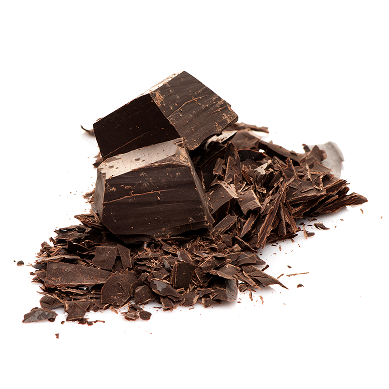
Raw Cacao
Raw cacao is the unprocessed form of cocoa beans, which are rich in flavonoids—particularly epicatechin and catechins—compounds known for their powerful antioxidant effects. These antioxidants help combat free radicals and reduce inflammation, which can improve cardiovascular health. Cacao is also a rich source of magnesium, iron, zinc, and copper, essential minerals that support bone health, energy production, and the immune system. Additionally, cacao contains compounds that may enhance mood, including theobromine, which acts as a mild stimulant, and serotonin precursors, which can improve mood and well-being.
Dark Chocolate (>70% Cocoa)
Dark chocolate with a cocoa content of 70% or higher is rich in flavonoids and has a higher concentration of cocoa solids compared to milk chocolate. The higher the cocoa content, the more antioxidants and nutrients it contains. Dark chocolate supports heart health by improving blood flow, lowering blood pressure, and enhancing circulation. Studies also suggest that consuming dark chocolate in moderation can improve brain function, support cognitive health, and reduce the risk of age-related cognitive decline. The combination of antioxidants, iron, magnesium, and polyphenols found in dark chocolate also helps boost overall wellness.
Recommended Intake
- Cacao: 1 to 2 tablespoons of raw cacao powder per day can be incorporated into smoothies, oatmeal, or baking recipes.
- Dark Chocolate (>70% Cocoa): A serving of 20–30g (approximately one small square) per day is generally considered beneficial and allows you to enjoy the health benefits without excess sugar or calories.
Tips
- Choose high-quality dark chocolate with at least 70% cocoa for maximum health benefits, as it has a lower sugar content and more beneficial compounds than lower-percentage chocolate.
- If using raw cacao powder, ensure it is organic and minimally processed to retain the most nutrients.
- Pair dark chocolate with a handful of mixed nuts or berries for a heart-healthy snack that’s both delicious and satisfying.
- Add raw cacao powder to smoothies, energy bars, or baked goods to enhance their flavour and nutritional content.
- For an extra boost, combine dark chocolate with other superfoods like turmeric or cinnamon to enhance its anti-inflammatory effects.
Avoid
- Overconsumption – Dark chocolate and cacao are calorie-dense, so moderation is key to avoid excess calorie intake.
- Processed chocolate with low cocoa content – These versions tend to be high in sugar, which reduces the potential health benefits.
- Eating dark chocolate right before bedtime – While dark chocolate can improve mood, its theobromine content may disrupt sleep if consumed too late at night.
Benefits
- Cacao (Raw & Powdered):
- Packed with antioxidants that help fight free radicals and reduce oxidative stress.
- Supports heart health by improving circulation and lowering blood pressure.
- Rich in magnesium, zinc, and iron, which contribute to energy production, immune health, and healthy bones.
- Contains serotonin precursors and mood-enhancing compounds that may improve mental well-being.
- Supports cognitive function and brain health, potentially reducing the risk of cognitive decline.
- Dark Chocolate (>70% Cocoa):
- Rich in flavonoids, which enhance blood flow and support heart health.
- May improve brain function by boosting memory and cognitive performance.
- Contains essential minerals like magnesium, which supports muscle and nerve function.
- May lower the risk of age-related cognitive decline by improving circulation and reducing inflammation.
- Offers a satisfying treat with moderate sugar content, making it a healthier option than milk chocolate.
Honey (raw, unprocessed)
Manuka honey, particularly in its raw, unprocessed form, is one of nature’s most powerful functional foods. Harvested from the nectar of the Manuka flower (Leptospermum scoparium) in New Zealand and Australia, this honey is renownedfor its unique health benefits, largely attributed to its antibacterial, anti-inflammatory,and immune-boosting properties. Raw Manuka honey retains all of its natural enzymes, antioxidants, and nutrients, making it a potent superfood that can be used for a variety of health-promoting purposes. Whether consumed straight from the jar, mixed into a warm beverage, or applied topically, raw Manuka honey is a versatile and highly beneficial food.
Read More
Raw Unprocessed Manuka Honey
Raw Manuka honey is unheated and unfiltered, meaning it maintains its full spectrum of beneficial compounds, including hydrogen peroxide, methylglyoxal (MGO), and dihydroxyacetone (DHA). These compounds contribute to the honey's remarkable antibacterial and healing properties. MGO, in particular, is a key component responsible for Manuka honey's strong antimicrobial action, which makes it an excellent option for soothing sore throats, wound healing, and supporting digestive health. Its antioxidant content helps to combat free radicals, reduce inflammation, and support overall immune function.
Recommended Intake
- Raw Manuka Honey: Consume 1–2 teaspoons of raw Manuka honey per day for general health benefits or use it to soothe a sore throat or digestive issues. For topical use, apply a thin layer to minor wounds or burns and allow it to sit for 15–20 minutes before rinsing off.
Tips
- Look for Manuka honey with a UMF (Unique Manuka Factor) or MGO rating, which indicates the potency of its antibacterial properties. A UMF of 10+ or higher is ideal for maximum health benefits.
- Do not heat Manuka honey above 40°C (104°F) to preserve its enzymes and beneficial properties.
- Add a spoonful of raw Manuka honey to herbal teas, smoothies, or oatmeal for a natural sweetener with added health benefits.
- For skin care, apply raw Manuka honey directly to the face or body as a mask or soothing treatment for dry skin, acne, or minor cuts and burns.
Avoid
- Processed Manuka Honey – Choose raw, unprocessed Manuka honey to ensure you’re receiving the full range of beneficial compounds. Avoid honey that has been pasteurized, as the heat can destroy many of its natural enzymes and antibacterial properties.
- Excessive consumption – While raw Manuka honey is packed with health benefits, it is still high in sugar, so moderation is key to avoid overconsumption.
Benefits
- Antibacterial & Antiviral Properties: Raw Manuka honey is renowned for its potent antimicrobial properties, thanks to the presence of methylglyoxal (MGO), which makes it effective in fighting harmful bacteria and viruses.
- Supports Digestive Health: Manuka honey helps to maintain gut health by promoting the growth of beneficial bacteria and supporting the healing of the digestive tract. It can soothe symptoms of digestive discomfort like acid reflux, IBS, and ulcers.
- Wound Healing & Skin Care: Raw Manuka honey is often used topically for its healing properties. It can accelerate the healing of wounds, burns, and ulcers by creating a moist environment that supports tissue repair while protecting against infection.
- Boosts Immunity: The antioxidants in raw Manuka honey support the immune system by neutralizing free radicals and reducing oxidative stress, which can help prevent illness and promote overall wellness.
- Soothes Sore Throats: Manuka honey is commonly used as a natural remedy for sore throats and coughs due to its anti-inflammatory and soothing effects. It can help to reduce irritation and promote faster healing.
Manuka honey! This is honey that is graded with a UMF rating is the honey we consume, but its specific grade determines how it’s typically used. Lower UMF grades (5+ to 10+) are commonly consumed for general health benefits, such as boosting immunity or soothing sore throats. Higher grades (UMF 10+ to 20+) are often used for more targeted health purposes, like digestive support or skincare, while the highest grades (UMF 25+ and above) are sometimes used in medical treatments. For everyday use, look for a UMF 10+ to 15+ rating, which offers a good balance of taste and medicinal properties.









